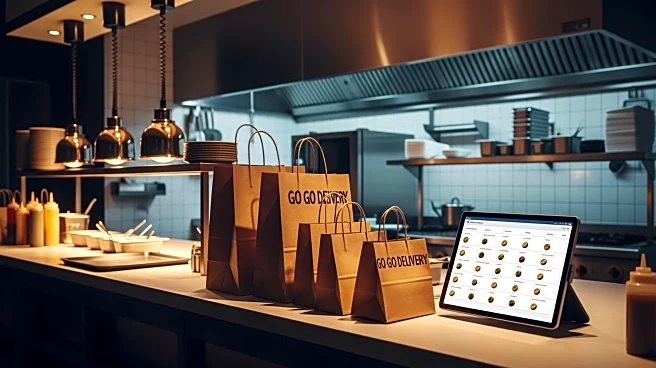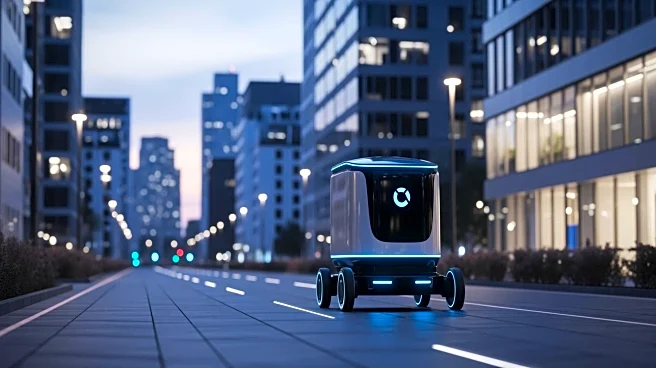What's Happening?
The rise of food delivery services has significantly transformed the American restaurant industry, shifting the focus from in-person dining experiences to delivery and takeout. Companies like DoorDash,
Uber Eats, and Grubhub have become dominant players, controlling a large share of the market. This shift has led to changes in restaurant operations, with many establishments adapting their menus and spaces to accommodate delivery demands. The convenience of delivery has become an essential part of many consumers' lifestyles, with a significant portion of restaurant orders now being consumed outside the restaurant.
Why It's Important?
The shift towards delivery has profound implications for the restaurant industry, affecting everything from business models to culinary creativity. While delivery offers convenience for consumers, it poses challenges for restaurants, which face high commission fees from delivery platforms. This has led to financial strain for many establishments, forcing them to adapt or risk closure. The trend also raises questions about the future of dining experiences and the sustainability of current delivery models, as restaurants struggle to balance profitability with the demands of delivery services.
Beyond the Headlines
The rise of delivery services has broader cultural and economic implications, reshaping how communities interact with local businesses. The convenience of delivery may lead to a decline in traditional dining experiences, impacting the social and cultural fabric of neighborhoods. Additionally, the reliance on gig economy workers for delivery raises concerns about labor rights and job security. As the industry continues to evolve, stakeholders will need to address these challenges to ensure a sustainable and equitable future for both restaurants and consumers.












